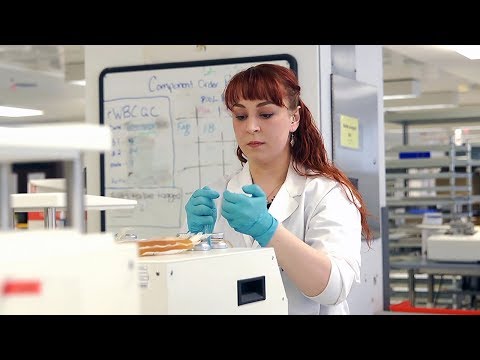Everything You Need to Know About Medical Lab Assistants
Contents
Medical lab assistants are a vital part of any healthcare team. They perform a variety of tasks to support the work of medical laboratories.
If you’re thinking of becoming a medical lab assistant or are already working in this field, this blog post is for you. We’ll cover everything you need to know about medical lab assistants from job duties and responsibilities to education and training requirements.
Checkout this video:
What is a medical lab assistant?
A medical lab assistant (MLA) is a person who works under the supervision of a licensed medical technologist or physician in a clinical laboratory. MLAs perform routine tests on blood and other body fluids, as well as prepare slides for microscope examination. They may also perform basic laboratory procedures, such as urinalysis and blood typing.
Medical lab assistants must be detail-oriented and have good manual dexterity, as well as strong communication and interpersonal skills. They must be able to follow instructions carefully and maintain accurate records. Most MLAs have at least a high school diploma, although some jobs may require postsecondary education, such as an associate’s degree in medical laboratory technology.
Duties of a medical lab assistant
Medical lab assistants are responsible for performing a variety of tasks in a clinical laboratory. They may work with patients, collect and process specimens, perform tests, and record and report results.
Medical lab assistants must be able to follow instructions carefully and pay attention to detail. They must also be able to work independently and as part of a team.
Education requirements for medical lab assistants vary by employer, but most positions require at least a high school diploma or equivalent. Some employers may prefer candidates who have completed a medical lab assistant program at a technical school or community college.
Education and training requirements
A medical lab assistant is a vital member of the healthcare team who performs routine laboratory tests and procedures to help diagnose and treat disease. Maintaining professionalism, cleanliness, and safety in the laboratory is of utmost importance.
While there are no formal education requirements to become a medical lab assistant, most employers prefer candidates with at least an associate’s degree in medical lab technology from an accredited institution. To be eligible for certification, candidates must complete an accredited medical lab assistant program and pass a national certification exam.
Skills and qualities
Medical lab assistants need to have good communication, organisation and problem-solving skills. They must be able to work well under pressure, as they may have to deal with demanding situations and deadlines. They must also be able to work on their own initiative and as part of a team.
Some employers may prefer candidates who have experience of working in a medical environment or who have qualifications in science.
Salary and job outlook
In 2018, medical lab assistants earned a median salary of $33,750 per year, according to the U.S. Bureau of Labor Statistics (BLS). The top 10% of earners made more than $50,930, while the bottom 10% earned less than $23,760.
Medical lab assistant salaries vary by experience and education level. For example, those with certification or an associate’s degree may earn more than those without. Additionally, those who have worked in the field for several years may earn more than entry-level medical lab assistants.
The job outlook for medical lab assistants is positive. The BLS projects that employment for medical lab assistants will grow 11% from 2018 to 2028, which is faster than the average for all occupations. Due to an aging population and advances in medical technology, there will be an increased demand for diagnostic testing, which will in turn lead to more jobs for medical lab assistants.
Working hours and conditions
Medical lab assistants (MLAs) usually work 37.5 hours a week, Monday to Friday. They may work regular daytime hours, or they may work evenings and weekends on a shift basis. Some MLAs work part time.
Most MLAs work in large hospitals, private clinics or diagnostic laboratories affiliated with hospitals. Some are employed in public health centers, blood banks or research laboratories. A small number may be self-employed or work in private industry.
MLAs typically work in clean, well-lit and ventilated areas. They wear protective clothing, such as gloves and masks, when handling specimens.
Job satisfaction
Medical lab assistants are in high demand due to the ever-growing healthcare industry. They play an important role in patient care by performing various laboratory tests. Many people choose this career path because they enjoy helping others and making a difference in the lives of others.
MLAs typically work in hospitals, clinics, or doctor’s offices. They work closely with medical staff and patients to ensure accuracy and quality of care.
The job satisfaction rate for MLAs is high. They report feeling a sense of satisfaction from helping others and providing quality care. They also enjoy the challenge that comes with performing various laboratory tests.
Pros and cons
Medical lab assistants (MLAs) are an important part of the healthcare team. They perform many of the routine tasks that keep a laboratory running smoothly, such as preparing and testing specimens, ordering supplies, and performing basic maintenance on equipment.
While MLAs do not need to be licensed or certified, most employers prefer to hire candidates who have completed a formal training program. These programs typically last one year or less and can be found at community colleges and technical schools.
The pros of becoming a medical lab assistant include:
– Job stability: The Bureau of Labor Statistics projects that employment of MLAs will grow by 16 percent from 2018 to 2028, much faster than the average for all occupations.
– Good pay: The median annual salary for MLAs was $32,330 in 2018.
– Flexible hours: Many MLAs work full time, but some have schedules that allow them to work evenings or weekends.
– Helping others: MLAs play an important role in the diagnosis and treatment of patients by performing vital laboratory tests.
The cons of becoming a medical lab assistant include:
– Repetitive work: Most of an MLA’s tasks are routine and require little decision-making.
– Coping with illness: Those who are squeamish or have a weak stomach may not be able to handle the sight of blood or other bodily fluids.
Career paths
Medical lab assistants are a vital part of the healthcare system, working behind the scenes to collect and process patient specimens. They perform a variety of tasks in the lab, using both manual and automated techniques.
While some lab assistants may specialize in a particular area, most are trained to perform all the basic duties of the job. These include collecting blood and other specimens from patients, preparing samples for testing, operating lab equipment, and performing routine maintenance on instruments.
Lab assistants typically work in hospitals, clinics, or private laboratories. They may also find employment in research facilities or pharmaceutical companies. Many lab assistants work full time, but some jobs may be available on a part-time basis.
The career paths for medical lab assistants are varied and many opportunities exist for advancement. Some workers may choose to become certified medical technicians or registered nurses Others may decide to pursue a degree in medical technology or another related field. With additional education and training, some lab assistants may eventually become laboratory managers or directors.
Medical lab assistant job outlook
The medical lab assistant job outlook is positive, with a projected growth rate of 14% from 2018 to 2028.* This means that there will be an estimated 131,300 new medical lab assistant jobs available during this time. The aging Baby Boomer population is one of the main drivers of this growth, as older adults are more likely to need medical tests and procedures. In addition, advances in medical technology are providing new opportunities for medical lab assistants to play a role in patient care.
*Source: https://www.bls.gov/ooh/healthcare/medical-and-clinical-laboratory-technicians-and-technologists.htm







